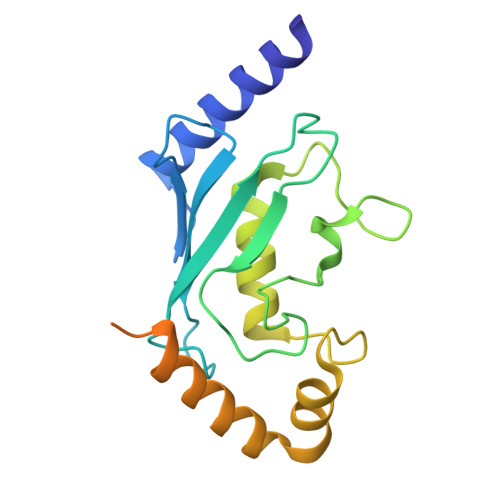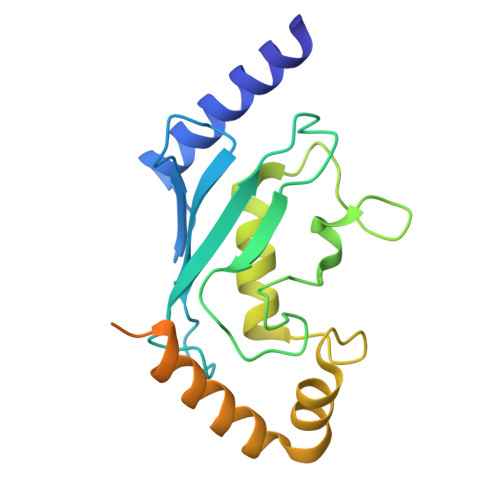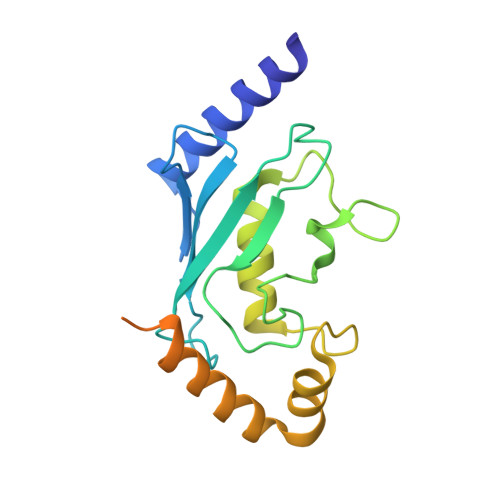Allosteric mechanism for site-specific ubiquitination of FANCD2.
Chaugule, V.K., Arkinson, C., Rennie, M.L., Kamarainen, O., Toth, R., Walden, H.(2020) Nat Chem Biol 16: 291-301
- PubMed: 31873223
- DOI: https://doi.org/10.1038/s41589-019-0426-z
- Primary Citation of Related Structures:
6R75 - PubMed Abstract:
DNA-damage repair is implemented by proteins that are coordinated by specialized molecular signals. One such signal in the Fanconi anemia (FA) pathway for the repair of DNA interstrand crosslinks is the site-specific monoubiquitination of FANCD2 and FANCI. The signal is mediated by a multiprotein FA core complex (FA-CC) however, the mechanics for precise ubiquitination remain elusive. We show that FANCL, the RING-bearing module in FA-CC, allosterically activates its cognate ubiqutin-conjugating enzyme E2 UBE2T to drive site-specific FANCD2 ubiquitination. Unlike typical RING E3 ligases, FANCL catalyzes ubiquitination by rewiring the intraresidue network of UBE2T to influence the active site. Consequently, a basic triad unique to UBE2T engages a structured acidic patch near the target lysine on FANCD2. This three-dimensional complementarity, between the E2 active site and substrate surface, induced by FANCL is central to site-specific monoubiquitination in the FA pathway. Furthermore, the allosteric network of UBE2T can be engineered to enhance FANCL-catalyzed FANCD2-FANCI di-monoubiquitination without compromising site specificity.
Organizational Affiliation:
Institute of Molecular, Cell and Systems Biology, College of Medical, Veterinary and Life Sciences, University of Glasgow, Glasgow, UK. Chaugule.Viduth@gmail.com.
















